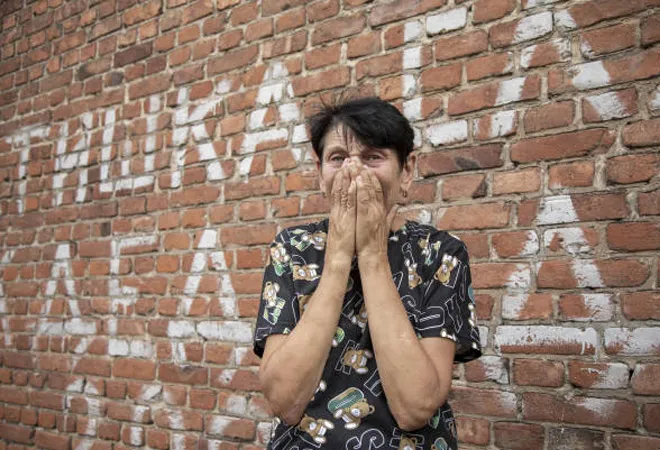
This brief is a part of
The Ukraine Crisis: Cause and Course of the Conflict.
Russia’s shocking invasion of Ukraine has shaken Central and Eastern Europe (CEE) to the core. The outbreak of the largest war in Europe since the Second World War, the influx of
four million Ukrainian refugees, the brutality of Russian forces, and the tough choices on Russian energy imports that the conflict imposes on Europe have shocked CEE and have massively increased its sense of insecurity. To make matters even worse, the chance of spillover of the conflict through provocations in the Black Sea or the Baltic Sea, cyberattacks, the targeting of Ukrainian military supply lines close to the
borders shared with CEE or even through sheer miscalculation is real, albeit small. The events of the last weeks have also raised the possibility of war between NATO and Russia fought in Eastern Europe, a conflict with very low probability but with potentially catastrophic impact. In short, the immediate impact of the war in Ukraine on the security of CEE has been severe.
The chance of spillover of the conflict through provocations in the Black Sea or the Baltic Sea, cyberattacks, the targeting of Ukrainian military supply lines close to the borders shared with CEE or even through sheer miscalculation is real, albeit small.
Long-term impact on CEE’s security
But what will be the long-term impact of the war in Ukraine on CEE’s security? Of course, the answer depends on how and when the war will end and what the political landscape in Ukraine and in Europe will look like in its aftermath. Nevertheless, as things stand now, it is likely that the conflict will have a paradoxical effect on CEE’s security. On one hand, the war will substantially aggravate the security environment CEE countries face, but on the other, it will strengthen the foundations of the security architecture that protects them.
On the negative side, Moscow’s invasion of Ukraine is likely to turn the gradually escalating confrontation between Russia and the US, and more broadly the West, into a new Cold War. This will confront CEE with a much more unstable and dangerous security environment, as the new Cold War will be markedly different from the previous one. There will be fewer institutional mechanisms for confidence building and crisis de-escalation, red lines will be much blurrier, and destabilising confrontation in large areas in Eastern Europe, the Caucasus, and the Balkans will replace the brutal but stable division of the Iron Wall. Significantly, the power disparity between NATO and Russia will also produce incentives for Moscow to drive up tensions to military and even
nuclear levels much faster than before, to establish escalation dominance and force the West to deescalate. The new Cold War will likely produce further militarisation of the Black Sea and the Baltic Sea, with ample potential for tensions and miscalculations, and might eventually generate knock-on crises on CEE’s borders in
Moldova, Georgia, the
Western Balkans and, under certain conditions, Belarus. Of course, the new Cold War in Europe will also have financial implications for CEE countries, with higher defence spending and greater energy costs. At a deeper level, the new Cold War will make CEE security more dependent on unpredictable global factors beyond the influence of the Central and Eastern Europeans, such as US–Russia competition in the Middle East and Asia and the dynamics of the Beijing–Moscow–Washington triangle.
On one hand, the war will substantially aggravate the security environment CEE countries face, but on the other, it will strengthen the foundations of the security architecture that protects them.
Paradoxically, on the positive side, the war in Ukraine will also strengthen the foundations on which CEE’s security architecture is built. First, the Ukraine war and the new Cold War will bolster Washington’s security commitment to NATO and its eastern flank, the cornerstone of CEE’s security. This reinforced commitment will be expressed in
greater deployment of US troops and arms in CEE, an even more vigorous American pledge to defend NATO’s borders, and closer defense cooperation with CCE countries. All this, together with US’s identification of Russia as its leading adversary, will alleviate CEE’s concerns that Washington’s competition with China in the Indo-Pacific will gradually pressure the US to diminish its engagement in European security. Second, the new Cold War will consolidate NATO, reducing differences between Europe and the US on key issues such as the future of the alliance, confronting Russia, and allied defence spending. It will also enhance UK’s role in the alliance, making it even more focused on Moscow and more hawkish. To CEE countries, which are among the staunchest of NATO supporters in Europe and mostly favor a tougher line on Russia, this will be a boon. Third, the war in Ukraine will strengthen the position of CEE countries in both NATO and the EU and give them greater say in shaping the security and economic policies of both. The very geographic position of CEE countries and their critical role as NATO and EU’s vanguard on the borders of Russian power will increase their political weight in both organisations, weight which had diminished in recent years. This is particularly the case with Poland, whose government long had tense relations with both
Brussels and the
Biden administration, but has emerged as the most
important NATO and EU member in CEE in the aftermath of Moscow’s invasion of Ukraine.
The new Cold War will consolidate NATO, reducing differences between Europe and the US on key issues such as the future of the alliance, confronting Russia, and allied defence spending.
Of course, there are many unpredictable factors which will shape CEE’s security after the Ukraine war, other than the outcome of the conflict itself. Western unity on Russia is one such factor, as the currently existing
variations in approach between NATO members, particularly the US, France, and Germany, might turn into substantive policy differences after the war. CEE unity on Russia and Ukraine, already challenged by
Hungary, is another factor. The prospects of EU defence cooperation, as well as Kremlin’s response to it, also constitute key variables. Beyond all this lies the future direction of the US–China–Russia triangle and the extent to which Moscow and Beijing will join forces against Washington. Will the US–Russia Cold War in Europe and the US–China one in Asia merge into a single global contest? What would this mean for CEE?
Many uncertainties plague the long-term future of CEE’s security in the wake of the Ukraine war. But two things seem certain. The aftermath of the war will confront CEE with a substantially worse security environment, but paradoxically, will also strengthen the very foundations on which CEE’s security architecture is built. But before this paradox fully emerges, the war needs to end. How and when this will happen will affect the future of both CEE’s security environment and security architecture.
The views expressed above belong to the author(s). ORF research and analyses now available on Telegram! Click here to access our curated content — blogs, longforms and interviews.



 This brief is a part of
This brief is a part of  PREV
PREV

